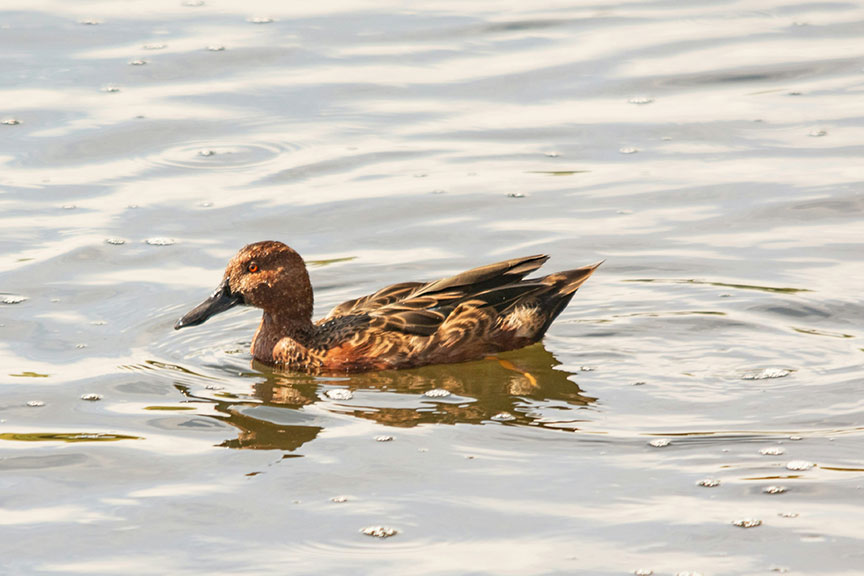Cinnamon Teal

Unique Characteristics and Habitat Preferences
Recognized for the male’s vibrant cinnamon-red plumage during the breeding season, it embodies the beauty of avian life. Females and juveniles, though less colorful, maintain a charm with their mottled brown feathers that provide effective camouflage in the reeds and grasses of their environment.
Equipped with a specialized bill, this small dabbling duck sifts through mud and shallow water to find seeds and small invertebrates, showcasing an adaptation suited to its dies. Inhabiting shallow freshwater bodies across the western United States, Mexico, and Central and South America during winter, these ducks favor environments rich in aquatic vegetation. These areas offer ample food and necessary cover from predators, highlighting the delicate balance within these ecosystems.
Conservation and Watching Tips
While their beauty and vibrancy add to their ecosystems, maintaining healthy populations of Cinnamon Teal relies on concerted conservation efforts. Habitat destruction and pollution remain significant threats to their survival. Thus, wetland restoration and protection initiatives are vital, ensuring these habitats continue supporting countless species dependent on these environments.
For birdwatchers and waterfowlers, early morning or late afternoon visits during migration periods increase the chances of sightings. Quiet observations from a distance with binoculars or a spotting scope yield rewarding views of feeding and social behaviors without disturbing them.
In fostering a greater appreciation for waterfowl, we recognize the broader need to protect our natural waterways and the myriad life forms they support. Sign up for the 50 Ducks Platform to monitor their migrations in near real-time. Through education, conservation efforts, and responsible wildlife-watching practices, we ensure future generations can also delight in the presence of these remarkable small dabbling ducks.
